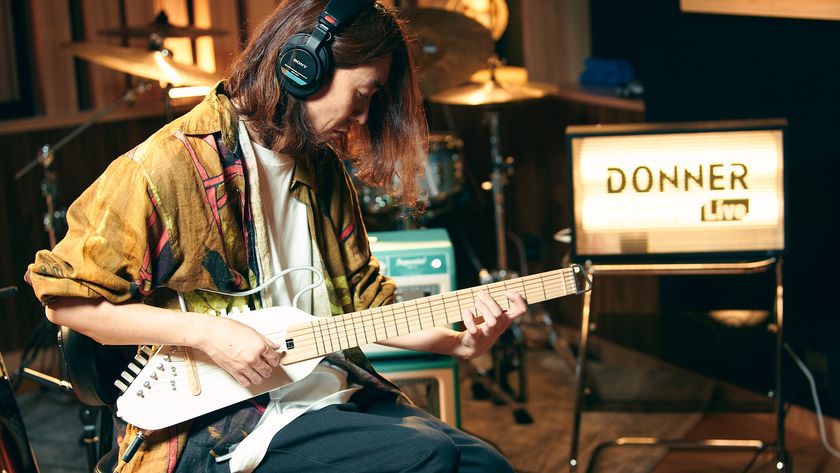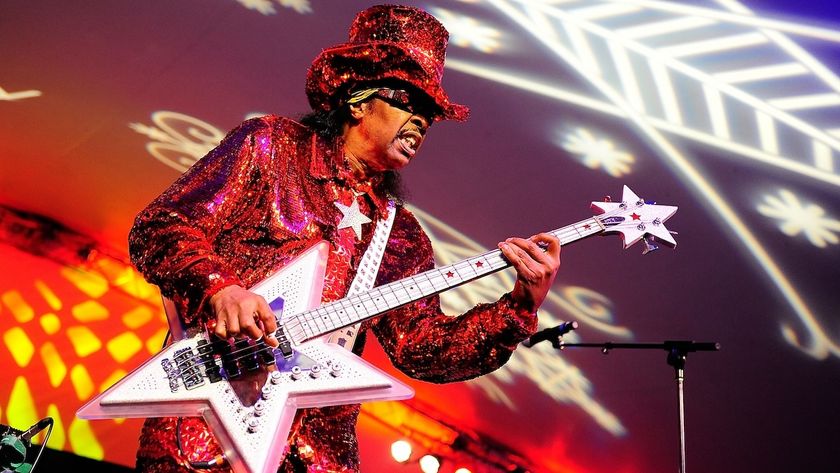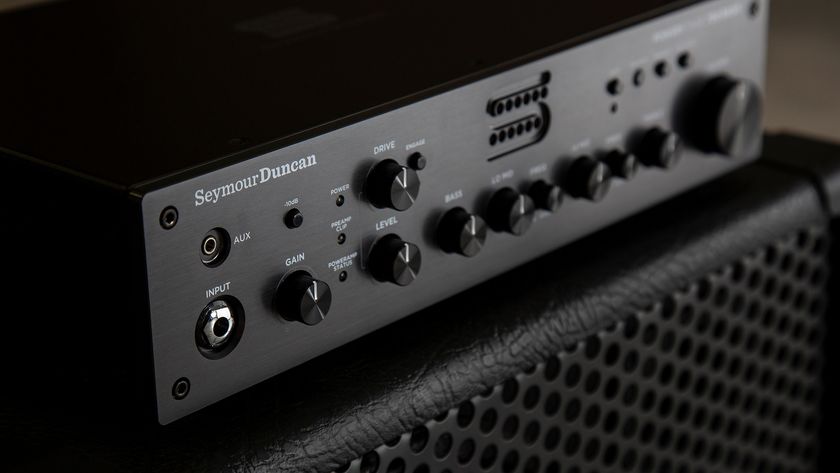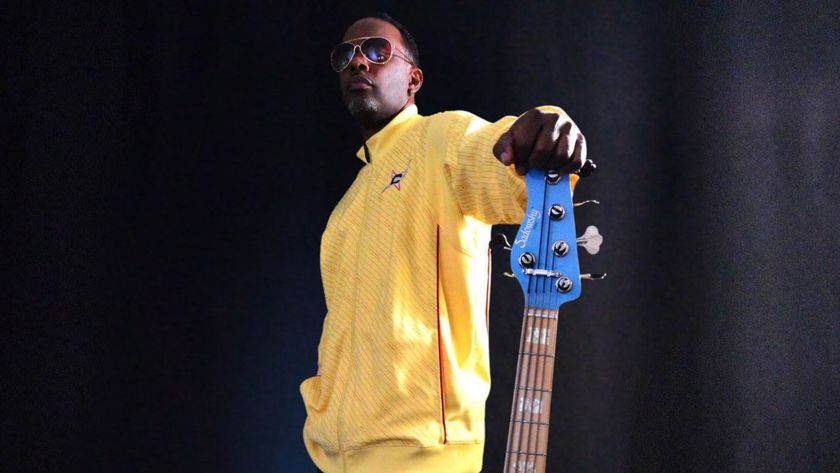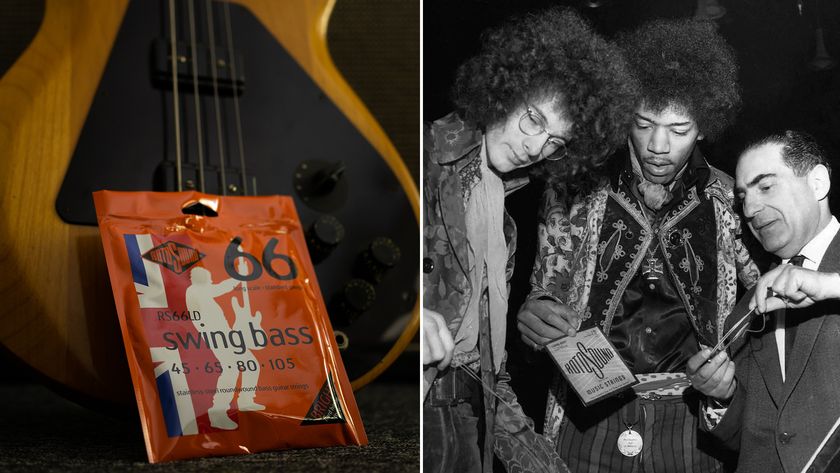The future sound of Fender: Black Pumas, Yola, Girl In Red, Ashley McBryde and IDLES on gear, tone and songwriting
We meet the Fender Next alumni who are building new sounds from fresh approaches
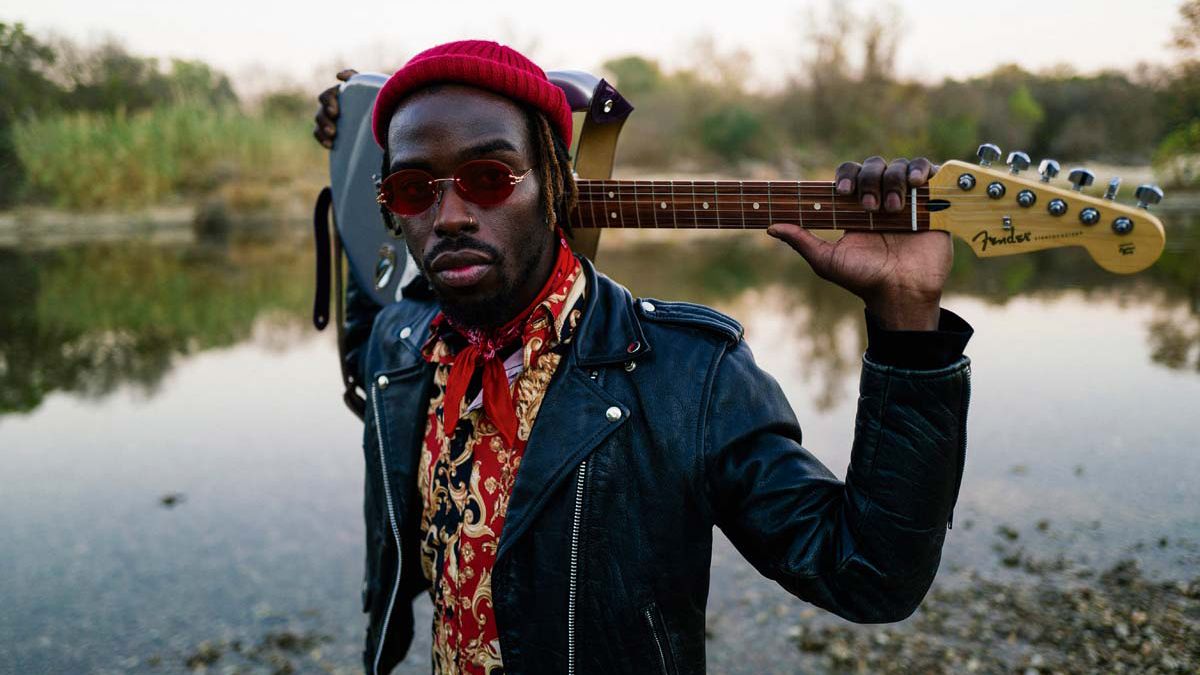
When you are making music, there is no right way of doing things, but you’ve got to create an environment in which nothing can get between you and your ideas. Where you’ve got space to game it out, guitar tones, melodies and all.
Take Girl In Red (stylised: girl in red), a lo-fi indie rock project of Norwegian singer-songwriter Marie Ulven. Girl In Red describes the early stage of her writing process as mumbling over chords. It’s tentative.
The guitar is there from the start, and crucial, fleshing out the song, but not more so than the context; she’s alone, and that is when she can best open up. “I definitely work best alone while writing lyrics,” says Ulven. “Being alone allows me to write with relaxed shoulders and actually take time to write lyrics I find interesting.”
For Ulven’s sound – all unguarded passions and bittersweet verse – the lyrics are crucial, around which the guitar can then do its thing and make the song happen. Ulven found her sound with a Strat, moving to a Vintera 70s Telecaster when performing with her band.
“My guitarist kept saying that the telecaster is the guitar, like there was no other,” she says. “They’re both great guitars with different tones and vibes. I like switching it up. I have a Mustang and a Lead Series, too.”
For Ulven, the guitar is strictly a tool. “I’m not even sure I like just playing guitar,” she says. But she doesn’t see that as diminishing the guitar’s importance, nor its potential. “I think you can do anything with a guitar when you start messing around with Logic, or any DAW,” she explains. “The instrument itself comes with limitations, but what you can do with it is endless.”

Like Girl In Red, Adrian Quesada’s Black Pumas is part of the Fender Next programme, which, each year, chooses about 25 up-and-coming artists and supplies them with gear and a platform, but his story, and how Black Pumas puts together their sound, is very different.
Get The Pick Newsletter
All the latest guitar news, interviews, lessons, reviews, deals and more, direct to your inbox!
For Quesada, it was only in finding a songwriting partner in Black Pumas’ lead singer and rhythm guitarist Eric Burton that he found the path. The creative kinship between Roberts and Quesada is the axis on which the Texans’ lush psychedelic soul jams spin.
“Not to say we are Mick and Keith!” he protests, “[But] the singer/guitar-player relationship is so important. It influences the way I play, the way that I approach the instrument.
When I was listening to Pearl Jam and everyone was into Mike McCready’s guitar solos, I was listening to Stone Gossard
Adrian Quesada
“When Eric and I first met and got together in Black Pumas, I was more into the studio and wanting to be a producer, and starting to faze out live performances. And, man, he just really inspired me to step up onstage and bring it, with full energy every night. His vocal phrasing also inspired how I played melodically. He is a killer rhythm guitar player, a great guitar player.”
Quesada’s focus has always been on the rhythm. When he was a kid watching Guns N’ Roses, it was Izzy, not Slash, who he looked to. “When I was listening to Pearl Jam and everyone was into Mike McCready’s guitar solos, I was listening to Stone Gossard,” he says. The point being: Quesada is all about using his guitar to support the song.
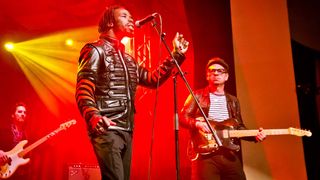
In Black Pumas, that meant a change of direction when it came to gear. “I was more of a humbucker player before,” he says. “Right around when Black Pumas started, I was really getting into Telecasters. Black Pumas’ instrumentation has an electric piano, and Eric plays rhythm guitar as well, and the Telecaster was really cutting through the mix, so it was something I used just out of necessity.
“Then I just fell in love with it. You can dial it back and let it sit in the song as a rhythm player, and then you can just hit a switch and you are cutting through. It has become a big part of the sound.”
Quesada used a Berly T-style before getting two Fender Tele Customs from Fender. The Custom’s humbucker is an all-important option for him. This will be fed into a Fender Deluxe Reverb, or alternatively a Princeton Reverb or Supro Thunderbolt combo.
“I like small, low-wattage amps,” he says. “I’ll do a whole tour with another amp and I’ll keep coming back to that Deluxe Reverb.”
Quesada’s sound is given heat and teeth via two a Catalinbread Fuzzrite and an EarthQuaker Devices Park Fuzz – “That one is incredible, man. I feel like I could get a little overdrive to all the way out to psychedelic 60s fuzz.”
As for the Fuzzrite, that’s for annoying the sound engineer, spaghetti western parts – or he could go crazy Ron Asheton [The Stooges] should the mood take him. A Strymon Flint is another key component in his rig, offering space and depth via the spring reverb mode and a movement by way of tremolo.
“Reverb and tremolo are a big part of the sound of Black Pumas and are a big part of what I want to do in general,” says Quesada. His secret weapon is the Xotic EP booster, which emulates the preamp of an Echoplex EP-3 and can hit the front end of the Deluxe with up to 20dB of gain.
This is not where Bristolian country and roots singer Yola Carter needs her guitar. At least, not yet. Yola has been cast as Sister Rosetta Tharpe in Baz Luhrmann’s Elvis biopic, and is right now working on her rock ’n’ roll lead chops, but right now her guitar playing is all about finding an acoustic tone that complements her voice and isn’t fighting for all the same frequencies.
“Warmth is probably the first thing I need from a guitar,” she says. “A warm acoustic with a naturally soft tone means that I don’t have to think too hard about fighting my guitar for supremacy vocally. My guitar is my right hand guy for writing so it needs to be the bedrock and foundation.”
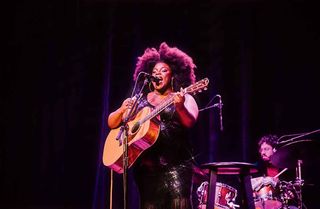
Yola tracked her solo debut album Walk Through Fire with Dan Auerbach at his Easy Eye Studio, Nashville, bringing the likes of Molly Tuttle and session legend Billy Sanford to sit in on the sessions. But the paths to playing guitar were not obvious to Yola, with former collaborators warning her off it.
I essentially wanted a way to get the songs out of my head, so chords and shapes ruled over scales and solos
Yola
“I was effectively laughed at, intimidated and made afraid to persist with learning every time I tried,” she says. “When I finally learned to play, it was because I was out from under the kind of paradigm that was down on women [for] having true agency enough to self-actualise.”
For Yola, learning guitar was a form of self-sufficiency. That’s all she needed to write a song. “I essentially wanted a way to get the songs out of my head, so chords and shapes ruled over scales and solos,” she says. “Acoustic won over electric for a long while too, cause it was cheaper to get a beat up old thing.”
As far as Ashley McBryde sees it, the songs can fall out of any guitar. But they’ll all fall out differently. A country singer-songwriter from Waldron, Arkansas, McBryde favours a Fender California acoustic for writing but wrote Stone on a Mustang, using Jazzmasters live to round out her lead guitarist Matt Helmkamp’s Tele/Strat twang.
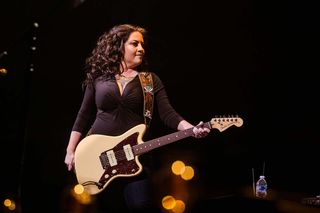
“The versatility of tone has got me changing guitars less during the show,” she says. “It does all of the jobs I need; the scale is perfect and the offset body works well.”
One of the enduring testimonies we hear, especially those operating in the hurly-burly of rock and punk, is that the singlecoil’s clarity and treble-forward bite is what ultimately makes an artist choose a Fender guitar.
Simon Neil from Biffy Clyro is a Strat über-fan. Baroness’ Gina Gleason and John Dyer Baizley switched to them so there was room to layer sounds on top. Few do this better than IDLES’ Lee Kiernan and Mark Bowen. They have made a celebratory fever of anger and post-punk iconoclasm.
The big stuff is on the pedalboard, like Bowen’s Death By Audio Echo Dream delay/fuzz and Rooms Stereo Reverberator, and Kiernan’s EarthQuaker Devices Data Corrupter and JHS Colour Box.

The guitars? Crucial, but they are there to be abused. Kiernan typically uses a Duo Sonic or an Esquire with a Mojo Broadcaster singlecoil, Bowen typically a 1972 Stratocaster.
“It was my dad’s guitar and he let me use it when I joined the band, and I fucking love it; it’s horrible, it’s disgusting. It’s actually disgusting. What’s living on there? I like to think I’m cultivating some antibiotics on there so I’m spreading some goodness around. It’s gross.”
These guitars are going to be played hard and repaired regularly. “We break our guitars a lot,” says Kiernan. “Any extra bits get broken. Switch? Gone! Pickup? Gone!” All in service to performance, folks. Leo Fender, the utilitarian, would surely have approved.
Jonathan Horsley has been writing about guitars since 2005, playing them since 1990, and regularly contributes to publications including Guitar World, MusicRadar and Total Guitar. He uses Jazz III nylon picks, 10s during the week, 9s at the weekend, and shamefully still struggles with rhythm figure one of Van Halen’s Panama.

“We set out to put our thoughts and musical ideas out there, hoping they’d be appreciated. That’s proved to be true”: Sampled by Grandmaster Flash, De La Soul and the Fugees, Cymande shaped the sound of hip-hop. Now they’re back to claim their legacy
![[L-R] George Harrison, Aashish Khan and John Barham collaborate in the studio](https://cdn.mos.cms.futurecdn.net/VANJajEM56nLiJATg4P5Po-840-80.jpg)
“I got the impression that he needed to be quite forceful to get his songs onto Beatles records”: George Harrison orchestrator John Barham reflects on their shared love of Indian music and being conducted by Phil Spector

